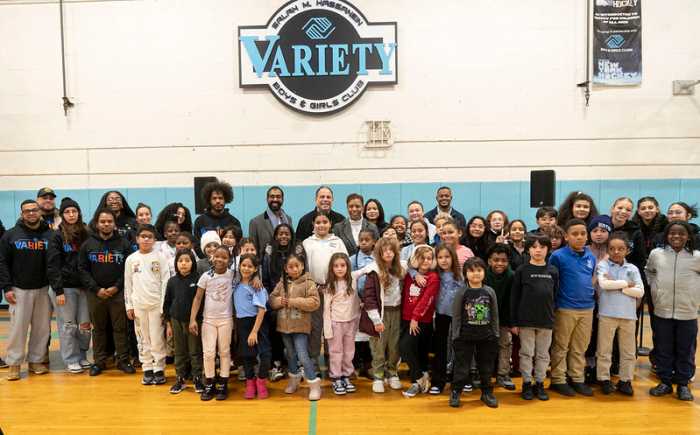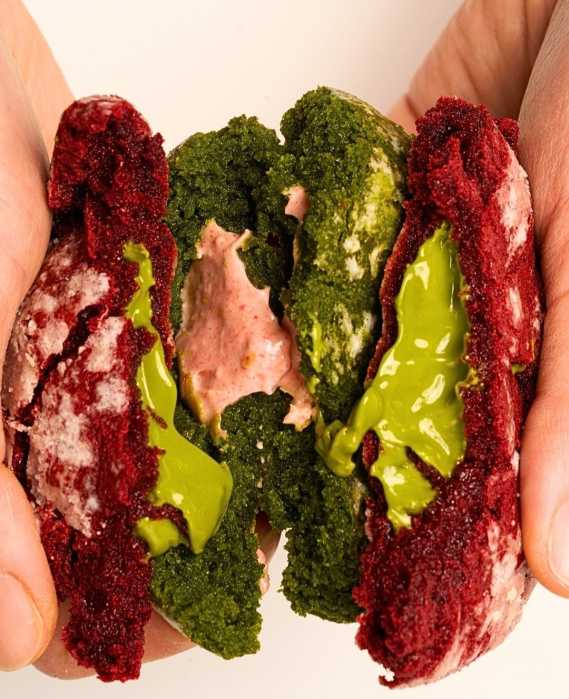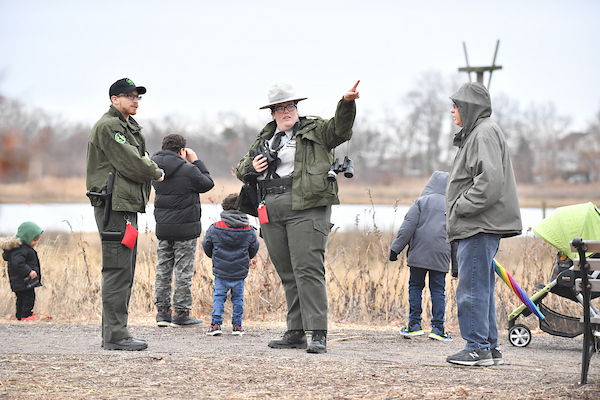The list of stars reads like a who’s who among TV and movie royalty.
The names W.C. Fields, the Marx Brothers, Michael Jackson, Diana Ross, Bill Cosby, Tony Bennett, Woody Allen, Al Pacino and Will Smith only scratch the surface of the mega-stars who have called Kaufman Astoria Studios (KAS) home for parts of their legendary careers.
This year, the film studio is celebrating its 90th anniversary in western Queens by looking back at its historic past, relishing its current position as the biggest studio east of Hollywood with a hit primetime TV show and expected blockbuster movie being shot there this year, and planning for the future that will continue to improve the studio and the surrounding community.
EARLY YEARS
In 1920, Adolph Zukor, who was the President of the Famous Players-Lasky Corporation, opened what was then a $2 million studio in northwest Queens with the hopes of taking advantage of the location’s proximity to Manhattan and key transportation – both of which are still important today.
“In building the studio it has been the aim to provide the best facilities for everyone concerned,” Zukor said in an interview published in the Queens Chamber of Commerce newsletter in the fall of 1919. “The stars will have handsome suites of rooms consisting of a reception room, dressing room and a secretary’s room.”
When the studio first opened, it was the silent films that carried the day with more than 50 films shot at the studio during its first six years. It wasn’t until 1929, that sound began being incorporated, and “The Letter,” which earned an Oscar nomination for Jeanne Eagels, became the first all talking feature film shot at the Studio.
When World War II broke out, the army took over the studio and renamed it the Signal Corps Photographic Center (SCPC). After Pearl Harbor, the studio was used for training films and the army continued to use it throughout the Korean War until 1970.
After the studio was left vacant for a number of years, a unique nonprofit collation was formed with representatives from industry, government and labor, which ran the studio for three years. During that time, the coalition convinced Sydney Lurnet to film the Wiz, starring Michael Jackson and Diana Ross.
KAUFMAN TAKES OVER After a few years of running the studio, the city decided to put it out for bid. Real estate developer George Kaufman won the bid and purchased the studio from the city in 1980. One of Kaufman’s first decisions was to bring on Hal Rosenbluth, President of KAS, to run the studio.
“Basically George said my job was to learn about the neighborhood,” said Rosenbluth during an hour interview with The Courier at the studio on August 30.
In 1983, KAS struck a deal to have “The Cotton Club,” filmed in Queens – a project that was important to the studio on a number of levels.
“The deal with Bobby Evans to do ‘The Cotton Club’ here allowed us to begin the process of doing something that hadn’t existed in New York, which was a full service studio facility,” Rosenbluth said.
While Rosenbluth said that the studio’s history is what really put KAS on the map, it was convincing the “The Cosby Show” to film there during the 1980s that helped show the film world that KAS could do electronic production for sitcoms, similarly or better than Los Angeles.
“It not only proved that we could do it, but it proved that it worked in New York,” Rosenbluth said.
A CATALYST FOR THE COMMUNITY
While KAS continued to add new stages and attract big TV shows and movies, it always understood that it wasn’t just about the studio.
“I think the neighborhood has had a huge impact on us,” Rosenbluth said. “My job at the beginning was to merge the studio and the neighborhood together so that the growth could expand in this direction. It wasn’t the studio and the neighborhood; it had to get merged together.
Working with the community, KAS has been able to bring a movie theatre, chain restaurants like Applebee’s and Uno Chicago Grill, Starbucks and Panera to the neighborhood. In addition, KAS also played a critical role in opening the Museum of the Moving Image, a facility that advances the public understanding and appreciation of the art, history, technique, and technology of film, television, and digital media. The Museum opened to the public in 1998 and is currently going through a renovation with plans to reopen in January of 2011.
“That area is the fastest growing part of Astoria right now,” said Assemblymember Michael Gianaris, an Astoria native who has represented the community in the Legislature since 2000. “It has become a destination for entertainment, for culture and for the arts and that would not exist without the presence of Kaufman Astoria Studios and the dedication they have to the community.”
However, it’s not just arts and entertainment that KAS has brought to the area. More than 10 years ago, Tony Bennett approached Kaufman about bringing a school with a focus on fine arts to the neighborhood.
“George said to get it done because it’s the right thing for this neighborhood and what we’re trying to accomplish in the reinvigoration of the entire neighborhood,” Rosenbluth said.
Frank Sinatra School of the Arts High School opened in 2001, and last year the school opened a new state of the art building at 35-12 35th Avenue on the KAS complex. In a short time, the school has already developed a reputation as one of the best arts schools in the city, and KAS plans to work closely with the school, including helping to record and produce a video with seniors this year.
A SAVIOR FOR THE INDUSTRY
“Without the tax credit, the movie and television production would leave New York like that,” Rosenbluth said as a snapped his fingers.
During the middle part of the last decade, TV shows and movies began leaving New York for destinations like Toronto and Louisiana where filming was decidedly less expensive. In order to save what many in the business had termed “a dying industry,” the New York State Legislature passed a film tax credit for the first time in 2004. The tax credit was wildly successful in its first year, and the state renewed the credit on a year-to-year basis in subsequent years.
According to U.S. Bureau of Labor Statistics, the number of motion picture and video production jobs and postproduction jobs in New York rose by 14.2 percent between 2004 and 2008 to 36,000 jobs, with two-thirds of those jobs located in New York City.
This year, Governor David Paterson and legislators passed a five-year tax credit worth $2.1 billion that Rosenbluth believes will have an extremely positive impact on the industry and the state.
“It gives us the chance to make this a sustainable industry, and I think as we do make it a sustainable industry the state will realize this is something their making money on, it’s creating jobs, it’s creating infrastructure growth, I think we’ll see it on a pretty consistent basis,” Rosenbluth said.
WHAT’S HAPPENING NOW
Currently, KAS has seven sound stages and 400,000-square-feet of production space available for single-day shoots or projects that are shot every year.
The “Smurfs Movie,” which is scheduled to be released in August of next year, recently wrapped up filming at KAS, “Nurse Jackie,” Showtime’s hit-TV show will begin filming its third season there soon and “Sesame Street,” which has called KAS home for 18 years will be back later this year.
“I like saying how do you get to Sesame Street, you come to Kaufman Astoria Studios,” Rosenbluth said.
Meanwhile, KAS has already snagged Men In Black III, which will be the first film shot at the studio’s newest Stage E – a 26,000 square foot facility that opened this year. Construction crews are currently building props and sets, including one for the Chrysler building, for the blockbuster starring Will Smith and Tommy Lee Jones.
“Getting ‘Men In Black III,’ which is the largest movie to come to NY in a long time, we were the envy of the rest of the gang,” Rosenbluth said.
FUTURE “We have more development in mind for the property surrounding the studio to expand ourselves from the point of view of being attractive to productions and stabilize and grow the economic development that we have been the catalyst for what has happened in this particular pocket of Astoria,” Rosenbluth said.
One of the first projects that KAS is already planning is to create a studio lot on 36th Street. Rosenbluth talked about how when producers go to a studio in California, they have a parking spot in a lot that they can pull into everyday – something KAS and New York studios currently lack.
“We want to be the only one of our kind in New York,” Rosenbluth said.
In addition, Rosenbluth acknowledged there were other plans, which he would not to into specifics about, to bring more attractions to the community that would continue make both the studio, and the neighborhood, a destination.
“We’re not changing the area, we’re bettering the area,” Rosenbluth said.

































